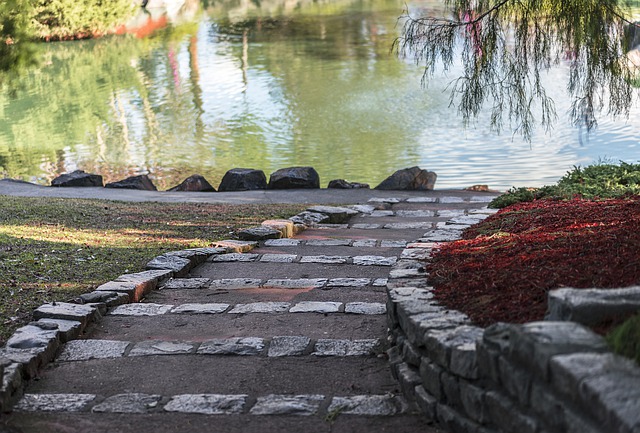When a difficult moment comes in life, the most important thing is to maintain emotional balance. And then the strength and energy will not be wasted, and the right solution to the problem will be found without difficulty. How to learn to maintain internal balance? How to find emotional balance?
Each of us wants to be calm, balanced, and always happy with life. And it is quite clear that this is the desire of every normal person!
You can learn to live without negative emotions. You just need to learn to understand yourself, not to replace your desires with others, to have your own opinion. Those who know how to do this always live in harmony and harmony with themselves and with their minds.
Feelings that help to find inner balance are useful to protect and develop. This is our core, which does not allow us to break down in a difficult moment and endure all the difficulties. Emotional balance depends on inner peace and harmony, this is a sure sign of well-being and good health.
(1) – “Recovery time describes whether a person can recover from various negative emotions quickly. The time required for emotional recovery is related to psychological resilience. Emotional recovery from negative emotions is referred to as psychological resilience and is defined as being characterized by “flexible adaptation to the changing demands of stressful experiences”. Recovery time as an indicator can demonstrate the collaborative effectiveness of the emotional system.”

How can you find an emotional balance to accept life in all its manifestations? How to find emotional balance?
#1. Look at problems from the top down, not from the bottom up
To ensure emotional balance, a person needs to learn to control reality. What does this mean?
It is possible to be “above” problems and different experiences when you have gained control of the situation. If you are “below” your problems, then you are focusing too much on them.
It is important, under any circumstances, to put yourself above what prevents you from maintaining control. If we consider the situation as if from above, it does not seem so dramatic and unsolvable.
#2. Accepting adversity
It is useful to learn to accept all the troubles, problems, and sorrows that fate sends us. To understand that no one’s life is simple. And it’s time to let go of things, people, and situations.
This part of life teaches us to be realistic and keep our minds calm.
#3. Develop decision-making skills
It is important to be a full participant in events and not just a passive observer. Activity increases self-esteem. When self-esteem suffers, our emotions, self-esteem, and personal values come under attack with it.
#4. The brain is our main ally
Stress, doubts, and fears are the real enemies of an emotionally stable mind, which prevent you from focusing attention on the main thing.
How can you train your main ally – the mind? Silence, meditation, and an attentive attitude to your needs and thoughts will help you. Give it a couple of hours every day, and it will give you the opportunity to calm your mind.

#5. Define your goals, values, principles
A person should grow personally from day to day, constantly learning something new, gaining experience, and improving his inner self. Tell yourself, “I deserve better and I want to be happy.”
If a person has a goal and confidence that he is moving in the right direction, nothing will stop him on the path of life. The psychological and emotional balance will help you find the most important thing – yourself.
#6. Remind yourself more often that you are “here and now”, and not in those troubles that will only be or that have already been. Each of us has what we need to feel happy!
We will be like this until we ourselves allow resentment and bad expectations to take over our thoughts. Try to find the positive in every episode of life. Only then will your future be good!
#7. Learn to replace bad thoughts. To do this, you need to choose short positive statements. These can be affirmations, meditations, or small prayers.
For example, try to replace an unpleasant thought with a mental message of well-being to the whole world.
This is a fairly effective method: it has already been proven that our brain is designed so that at a time it can hold only one single thought. Therefore, it is up to us to decide what thought you will think!

Assessment of the stressor. How to find emotional balance?
In order to choose the right reaction, it is necessary to adequately assess the stressor. A pause will help in this: just 4 seconds, inhale and exhale — and this will be enough for the prefrontal cortex to be involved in assessing the situation. Do not worry that you will look stupid, but rather the opposite – such slowness will create for you the image of a person who is responsible for his words.
And even if stress is unavoidable, using it correctly will turn the energy of stress into inspiration and challenge, not anxiety. Then, in fact, the assessment: is the threat posed by stress or the stress reaction itself, do additional protective measures need to be taken? You remember that the most harmful thing is uncontrolled stress, so what can you immediately take control of?
Options:
eliminate the stressor: take measures to solve the problem, get away from the problem,
reduce stress: adapt your physiological reaction,
change your attitude to the stressor: reduce the importance of the stressor,
change your behavior: choose a different coping strategy.
Evaluate your reaction: is your response proportional to stress, do you know when to turn off the stress reaction and how to limit it in time?
Think about how to reallocate resources to solve the problem that has arisen, what you need to let go of, and what resources can be used in this situation.
If something has already been lost, then perhaps it is no longer worth fighting for it, being offended, or regretting. Be sure to go through several options: if you have only one idea, then it’s not very good, and start acting only if you have at least three different ways to solve this problem.

Coping strategies are programs that a person adheres to in order to cope with stress. They can be useful in one case and harmful in another. Choosing the right strategy is an important decision that increases stress tolerance. You can act alone or socially, you can actively solve the problem or evade it, and you can act actively or passively.
(1) – “Emotional instability or immaturity points to an individual’s failure to develop the degree of independence or self-reliance that is seen in a normal adult, with consequent use of immature adjustive patterns and inability to maintain equilibrium under stresses, unlike most individuals who do not have these negative traits. Emotionally disturbed or unstable individuals represent lack of capacity to dispose off problems and irritability, needing constant help to accomplish day-to-day tasks. They also show vulnerability and stubbornness, looking at the same time for sympathy. They are conceited, quarrelsome, infantile, self-centered and demanding sort of persons.”
In the light of significance of emotional stability in this age of industrialization, competition, stress and tension: and keeping in mind the concept of emotional stability as defined in the literature cited above the present study was undertaken to develop and standardize a scale to measure the emotional stability.
Typical coping strategies are. How to find emotional balance?
#1. Confrontation is an active solution to a problem, defending one’s interests in concrete actions, maybe not always adaptive.
#2. Distancing is a decrease in the importance of the problem, a decrease in emotional involvement, a devaluation of the stressor, and a switching of attention. In some situations, “repressive coping” will be useful, when people tend to avoid negative thoughts, emotions, and memories.
#3.Self–control is overcoming a problem by restraining emotions and purposeful behavior, high self-control.
#4. The supported search is the attraction of external resources, usually people, waiting for help, advice, and attention.
#5. Acceptance of responsibility is the recognition of one’s responsibility for a problem, often with elements of guilt and self–criticism, which can be combined with chronic dissatisfaction with oneself.
#6. Escape avoidance is the avoidance of solving a problem through its denial, fantasy, or regression. In some catastrophic cases, denial may be the best strategy to keep hope alive.
#7. Planning is an analysis of the situation and the development of a rational strategy for its solution.
#8. Positive reassessment is a rethinking of the problem as an incentive for personal growth, finding positive moments in it.
Additional stress resistance factors include trust and a prosperous social environment, and cooperation with other people. Some self-aggrandizement: it is believed that it is useful to accept your limitations, but sometimes overestimated self-esteem and unrealistic prejudices about yourself contribute to the well-being and increase resistance to stress.
(1) – Development of emotional stability scale. M. Chaturvedi and R. Chander
https://www.ncbi.nlm.nih.gov/pmc/articles/PMC3105556/
Like what you’re reading? You can sign up for Medium using my affiliate link. Just $5 a month to read an unlimited number of articles and help me create further. Together we will move mountains!



